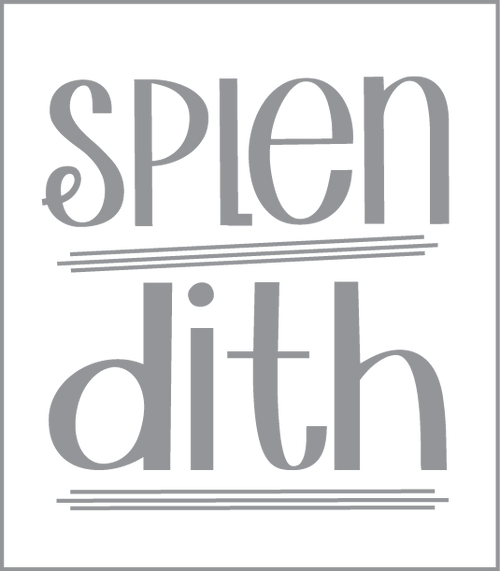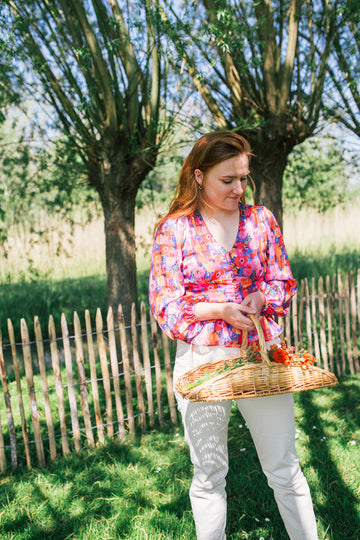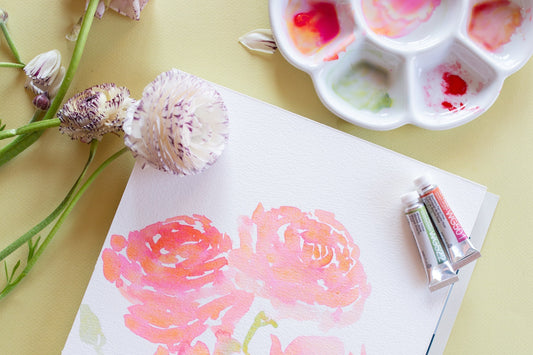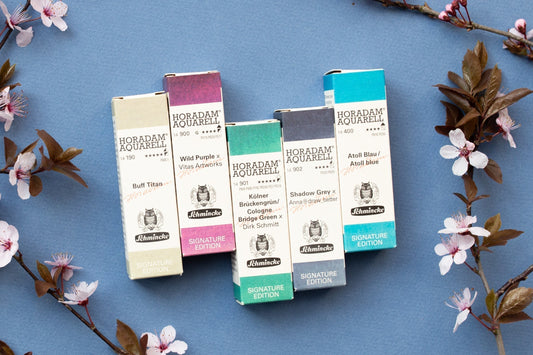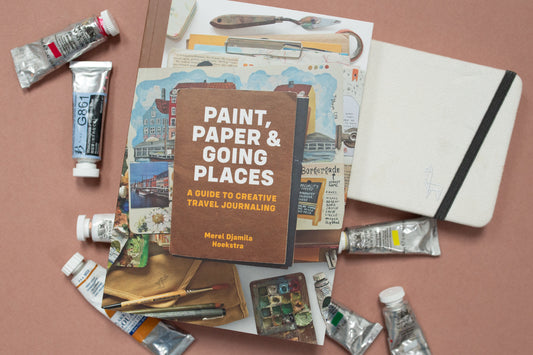
What is (water-soluble) gouache?
Water-soluble gouache, is the better known and is usually called traditional gouache. Gouache is a water-based paint that is known for its brightness and opacity. It is similar to transparent watercolor that you know as watercolor paint. Gouache has a different composition of pigment that makes the paint opaque.
What I personally like about water-soluble gouache is how easy it is to correct. Make a mistake? No problem, just add some water and you can start over. You can also store this gouache more easily. For your palette, you can always reuse the dried-up dots of paint, in the same way as watercolor paint.
The pros and cons in a row:
Pros:
- High coverage: Perfect for creating vibrant, opaque layers.
- Reactivatable: You can re-wet and correct it even after it has dried. This is especially nice for your palette.
- Matte Finish: It gives your work a beautiful and soft, velvety look.
- Easily draw details on it with colored pencils: gouache dries with a structure that you can easily draw over with a colored pencil.
Cons:
- Not water resistant: Once dry, it remains water soluble, meaning your work will not be permanent without varnish.
- More difficult to work layer upon layer: the upper wet layer will mix with the lower layer. This can be both an advantage and a disadvantage.
- Limited adhesion: This gouache adheres particularly well to paper. May flake if applied to a smooth surface without a good primer.

What is Acrylic Gouache?
Acrylic gouache combines the best properties of gouache and acrylic paint. It has the matte finish and opacity of traditional gouache, but dries permanently and water-resistant like acrylic paint. This makes it a fantastic option for illustrators! Holbein Acrylic Gouache works incredibly well and is available in beautiful bright colours.
Here are the pros and cons of acrylic gouache:
Pros:
- Water Resistant: Once dry, it is permanent and cannot be reactivated with water.
- Versatility: Adheres to a variety of surfaces, including wood, paper, and canvas. (although I will say that the best result is on paper.
- Matte Finish: Like traditional gouache, but with the practical properties of acrylic.
Cons:
- Fast Drying Time: You must work quickly or use a palette with a lid to keep the paint moist.
- Less Correctable: Mistakes are harder to correct because the paint is permanent once it dries.

My Experiences with Both
Personally, I like the flexibility of water-soluble gouache to quickly grab a palette. It is also nice that you can reactivate precious paint from your palette. You can put favorite colors pre-mixed on your palette for example.
On the other hand, I like to use acrylic gouache for projects where I know I will be working in layers. The paint dries so quickly, which is perfect if I am going to work more illustratively. The luminous colours of Holbein are also a favourite, few other ranges have such bright colours.
Which one do I recommend to you?
The choice really depends on your project. If you’re looking for something that’s easy to correct and has a soft, matte finish, go with water-soluble gouache. But if you’re doing illustrative work, acrylic gouache might be the right choice for you. Weigh the pros and cons of both gouaches and make your choice.
Shop both traditional gouache and acrylic gouache in our shop.
Love,
Judith
PS Do you have a preference for any of these types of gouache? Share your experiences with us! We are always curious about your creative adventures.
